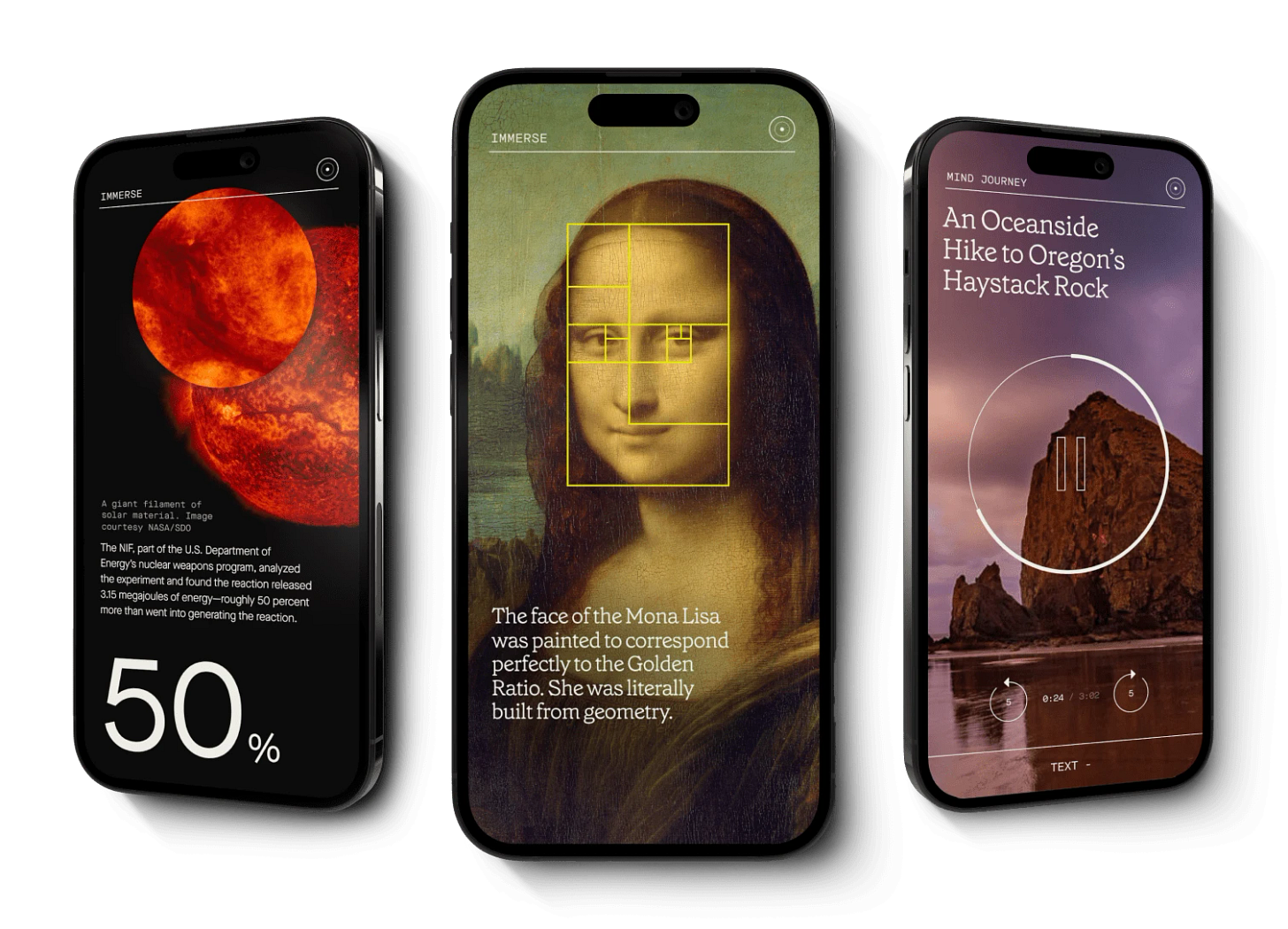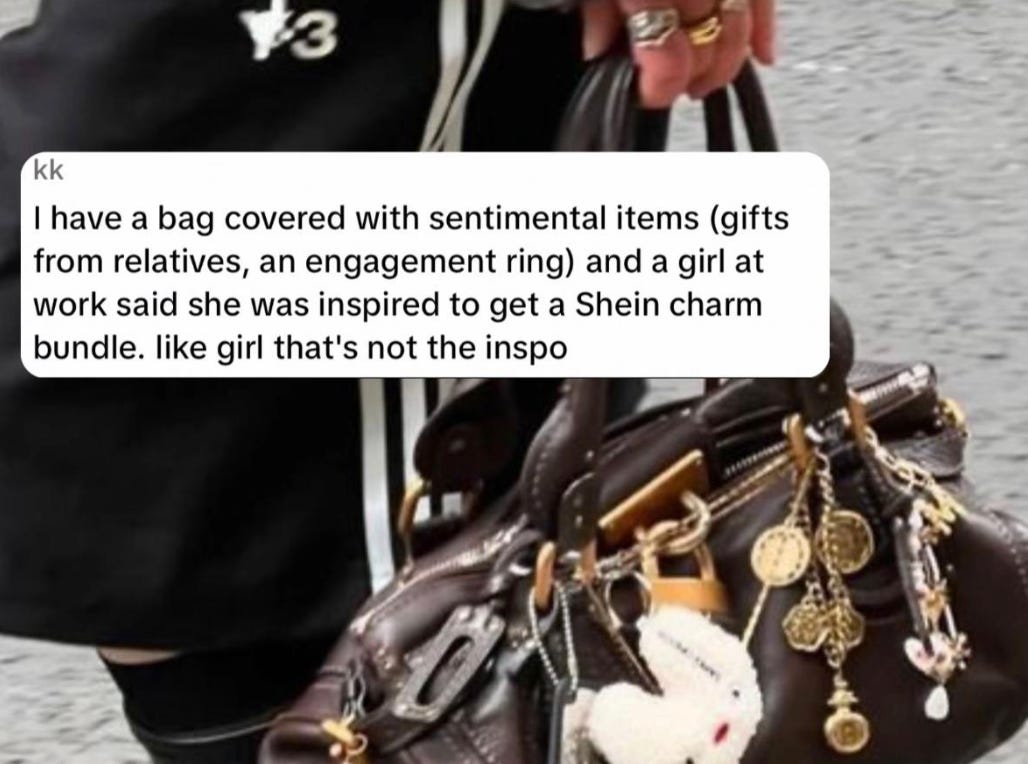“Brain-rot" was the 2024 word of the year, surprising to no one. From doom-scrolling through climate disasters and political upheaval, to algorithms force-feeding us increasingly unhinged content, chaos is outdoing itself everyday. The constant state of disorder is reshaping how communities seek refuge, over-commodifying subversion in design, and forcing brands to revisit their role in culture.
1. Chaos in Communities
The onslaught of chaos means that people literally do not want to be here.
Day after day of unprecedented news has caused a crisis fatigue, and while many are continuing to fight the good fight, there is still a very valid reason for people to feel tired of it all. It seems that nobody is listening unless chaos is fought with an even more chaotic response (think: crime), and in reality, people just want to be held. The result is cozy rebellion, where the act of embracing easy-to-grasp absurdity and then taking the nap when needed, is a middle finger to the man.
Memes about Luigi Mangione are much easier to create and more fun than going to an actual protest. Tiktok’s like @historiandaily and @wahony bring disassociation to a whole other level by pretending we’re living in a different universe. Meanwhile, apps like thehuman.space offer a calm, chaos-free way of providing ‘self-care to the mind’.
By creating and participating in these micro-spaces and conversations, people aren't just avoiding chaos; they're building alternative narratives that make existing power structures feel a bit further away.
So what? In a world where chaos is currency, accessibility to narratives, stories, and tools that help people find comfort and refuge is more important now than ever. How can brands create or co-facilitate spaces that can provide that?


2. Chaos in Design
While communities serve as a way to escape the chaos, individuality is now expressed by how much you can lean into it. But as chaos becomes a means of self-expression, the resulting ‘individuality’ has become a pre-packaged, purchasable aesthetic, reducing the impact of the radical authenticity and subversion it once had.
Think about charms and trinkets. What were once symbols of stories, have turned into pre-curated charm kits that prioritize aestheticism over lived experiences. Or, ‘brat’, that was once a way to embrace messiness in a world of ‘clean girl energy’, then became every single corporation’s polished marketing strategy.

The good news is, the commodification of chaos hasn't completely dismantled its potential for authentic expression. Grassroots organisations and designers, such as Pilot Magazine, are still harnessing its authenticity as a way to cut through the noise. Bigger brands just need to be more careful of when they deploy this aesthetic to avoid the powerful design code from completely collapsing.
So what? While chaos is becoming over-codified, it remains a means for people to express their individuality. How can brands continue to help consumers access chaos as a means of self-expression, while preserving its power?

3. Chaos in Brands
While chaos in design might be over-commodified, it continues to dominate in culture. Take for example A$AP Rocky’s music video for ‘Tailor Swif’ or AVAVAV’s runway shows that create virality and hype, and get people talking. It works for these curators because they’re the og chaos curators. It’s when chaos is re-appropriated through a third party where it feels inauthentic.


Brands then face a strategic dilemma. The cultural zeitgeist demands disorder, but audiences have developed a radar for detecting when it's manufactured. Think of the difference between how people reacted to the chaos behind Kendrick Lamar’s Superbowl performance versus the atrocity of Kanye and Bianca Censori’s appearance at the GRAMMY’s; while the former is an authentic ode to what being a hater is, and the latter just seemed to purely be for shock value.
Brands need to now find the fine line between amplifying chaos (because that's where culture’s at) and providing stability (because that’s what can help brands find a meaningful role).
This requires brands to understand their role in the market. Do they exist to help people revel in subversion? Or do they serve as a counterbalance, offering clarity in a sea of overstimulation? The answer to this lies in understanding how a brand’s purpose and role intersects with serving cultural needs.
So what? It’s more important than ever to define the role your brand plays in shaping culture in the long-run: does it serve as an amplifier of cultural discourse (and thus it have the legitimacy to do so), or does it offer an alternative narrative?
Tune in next month for more musings and mischief.
Questions, compliments or complaints? Shoot us an email on the below
Yra Lougheide-Camejo – Senior Strategist
Yralougheide-camejo@jkrglobal.com
Ruhi Kokal – Strategist
Culture Drop



